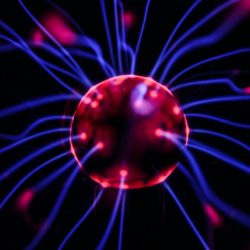Age-Related Macular Degeneration (AMD) results in progressive degeneration of the retina , especially in the macula, leading to blindness in people over 50 years of age. 25% of people over 85 have AMD. The main symptoms of this pathology are the growing need for light to read, deformations in the center of the visual field and a more or less severe decline in visual acuity. Ophthalmologists have shown that there are 2 essential pathologies: atrophic or dry AMD (75% of patients) in which the cells of the retina spontaneously disappear, and neovascular or wet AMD, the most serious, in which new blood vessels develop, destroying tissue. AMD is in fact the most common cause of blindness in the United States and Europe.
What are the risk factors for AMD?
- Age
- Alcoholism
- Genetic variants (mutation of complement factor H)
- Family history
- Smoking
- Cardiovascular illnesses
- High blood pressure
- Obesity
- Solar exposure
- A diet low in omega-3 fatty acids and green vegetables
- A diet high in fat
INSERM researchers have shown that this disease is linked to the presence of the e4 allele of apolipoprotein E , which also increases the risk of vascular disease and Alzheimer’s disease .
A screening ophthalmologic examination is recommended every 2 to 4 years between 40 and 65 years, then every 1 to 2 years.
Dry macular degeneration
Age-related dry macular degeneration causes changes in the retinal pigment epithelium , usually in the form of dark pontillate areas. Retinal pigment epithelium plays an essential role in maintaining healthy and functioning cones and rods. Particularly, the accumulation of waste from the sticks and cones can lead to the formation of drusen, which appear as yellow spots. Areas of chorioretinal atrophy (called geographic atrophy) indeed appear in more advanced cases of the dry form of age-related macular degeneration. There is no raised macular scar (disciform scar), no edema, no hemorrhage, no exudation.
Wet macular degeneration
Age-related wet macular degeneration occurs when new, abnormal blood vessels develop under the retina in a process called choroidal neovascularization (new formation of abnormal vessels). Macular edema or localized bleeding can lift an area of the macula or cause detachment of the localized pigment epithelium. Untreated neovascularization eventually causes a disciform scar visible at the posterior pole.
Some naturopathic tips to prevent AMD
AMD, the frequency of which increases with age, is a chronic disease of slow progression in 90% of cases (AMD in its so-called “dry” form), causing a gradual decline in visual acuity. by loss of central fixation. While central vision can eventually become very low (visual acuity <1/10), which defines “legal” blindness, peripheral vision is retained: AMD does not cause blindness in the sense that patients can understand it (be ” in the dark “).
- It is essential to stop smoking.
- The living space must be reorganized to avoid falls related to low vision: eliminate obstacles such as carpets, extension cords, poorly protected stairs, etc.
- The fight against other visual disabilities (cataracts), sensory (deafness) and motor disorders associated with age ( Parkinson’s) also allows the patient to limit the impact of AMD on quality of life.
- Vitamin supplements play a useful protective role in moderate or advanced unilateral AMD.
- In the event of advanced bilateral AMD, rehabilitation and visual aids (mono or binocular magnifying systems, cameras allowing texts to be transferred to a computer screen) can allow the patient to maintain his autonomy as long as possible. Support by personnel specializing in low vision (ophthalmologist and / or orthoptist) can be an important asset.
- An emergency consultation with an ophthalmologist is necessary in the event of a sudden decrease in visual acuity, the appearance of a central scotoma or deformation of objects (metamorphopsies), because these signs are suggestive of a neovascular complication (AMD in its so-called “wet” form).
Are there natural supportive treatments for AMD?
Trioptec prevention AMD :
Trioptec prevention AMD offers a formula enriched in vitamins, trace elements DHA and blueberry to preserve and protect the vision.
- DHA and Zinc protect the survival of retinal cells and play an antioxidant role.
- Bilberry promotes the production of rhodopsin, present in the rods, which are with the cones one of the two types of photoreceptor cells present in the retina.
- Vitamins C and E and trace elements (copper, selenium, zinc) are antioxidants; they protect the vision from premature degeneration.
Léro pervulane vision prevention AMD :
This product brings together in its formula fatty acid DHA (omega 3 of marine origin, provided by an oil from wild fish), zinc, vitamin A and vitamin B2, which are all recognized to help maintain normal vision. Léro research has chosen to combine two other micronutrients, lutein and zeaxanthin, which are found in large quantities in the retina.
NHCO Retinium Eye Health :
The NHCO Retinium food supplement includes a morning formula and an evening formula to provide complete care to your eyes.
The morning formula is in the form of tablets. It acts in favor of the retina and the lens by providing them with all the nutrients essential for good visual health. Its antioxidant action consequently makes it possible to preserve the eyes from certain diseases such as cataracts or even retinopathy, while reducing degeneration and ocular aging.
The morning formula offers the benefits of 2 high quality patented extracts :
Indian Saffron Extract standardized in crocins is the result of 4 clinical studies. It helps improve retinal sensitivity to counteract ocular degeneration. It is also an antioxidant, and it boosts blood flow to the eye.
Melon Juice Extract helps protect retinal cells from cell death by reducing the formation of Drusen in the back of the eye, responsible for the appearance of small vessels. It also stimulates the main antioxidant defenses of the eye.
The evening formula is in the form of capsules. It is enriched with fish oils to nourish the cell membrane of the eyes from the inside. Thus, the eyes are strengthened and eye sensitivity is reduced.
On the side of food supplements:
- Zinc oxide
- Copper
- Vitamin C
- Vitamin E
- Lutein / zeaxanthin (or beta-carotene or vitamin A in patients who have not smoked) → Reduction of age-related macular degeneration, eye protection, the benefits on AMD would be demonstrated from 6 mg / d of lutein , knowing that the average consumption is 2 mg / d.
The consumption of very high doses of antioxidants (vitamins C and E, carotenoids) or antioxidant coenzymes (zinc) nevertheless makes it possible to reduce the risk of development of unilateral intermediate or advanced AMD.
Beta-carotene supplementation is contraindicated in smokers or former smokers (quitting <1 year) due to an increased risk of lung cancer.
On the side of medicinal plants:
Bilberry (fruit) :
Bilberry prevents age-related macular degeneration (AMD) by limiting the production of autofluorescent pigments that accumulate in the epithelial cells of the retina. It also prevents cataracts.
Turmeric :
The curcumin protects the cells of the retinal pigment epithelium against oxidative damage induced by H2O2, and it regulates the expression of biomarkers of proliferation, oxidative stress, and apoptosis of retinal cells.
Medical bibliographic sources and clinical trials :
- Age-Related Eye Disease Study 2 Research Group: Lutein + zeaxanthin and omega-3 fatty acids for age-related macular degeneration: The age-related eye disease study 2 (AREDS2) randomized clinical trial. JAMA 2005-2015, 2013. Clarification and additional information. JAMA 2013
- Dugel PU, Koh A, Ogura Y, HAWK and HARRIER Study Investigators: HAWK and HARRIER: Phase 3, multicenter, randomized, double-masked trials of brolucizumab for neovascular age-related macular degeneration. Ophthalmology, 2020
- Haug SJ, Hien DL, Uludag G, et al: Retinal arterial occlusive vasculitis following intravitreal brolucizumab administration. Am J Ophthalmol Case Rep, 2020
- Richer S, Stiles W, Statkute L, Pulido J, Frankowski J, Rudy D, Pei K, Tsipursky M, Nyland J. Double-masked, placebo-controlled, randomized trial of lutein and antioxidant supplementation in the intervention of atrophic age-related macular degeneration; the Veterans LAST study (Lutein Antioxidant Supplementation Trial). Optometry. 2004
- Bernstein, PS, Li, B., Vachali, PP, Gorusupudi, A., Shyam, R., Henriksen, BS, & Nolan, JM (2016). Lutein, zeaxanthin, and meso-zeaxanthin: The basic and clinical science underlying carotenoid-based nutritional interventions against ocular disease. Progress in retinal and eye research
- Ranard, KM, Jeon, S., Mohn, ES, Griffiths, JC, Johnson, EJ, & Erdman, JW, Jr (2017). Dietary guidance for lutein: consideration for intake recommendations is scientifically supported. European journal of nutrition
- Sparrow JR, Vollmer-Snarr HR, Zhou J, Jang YP, Jockusch S, Itagaki Y, Nakanishi K. A2E-epoxides damage DNA in retinal pigment epithelial cells. Vitamin E and other antioxidants inhibit A2E-epoxide formation. J Biol Chem. 2003
- Zhu W, Wu Y, Meng YF, Wang JY, Xu M, Tao JJ, Lu J. Effect of curcumin on aging retinal pigment epithelial cells. Drug Des Devel Ther. 2015





